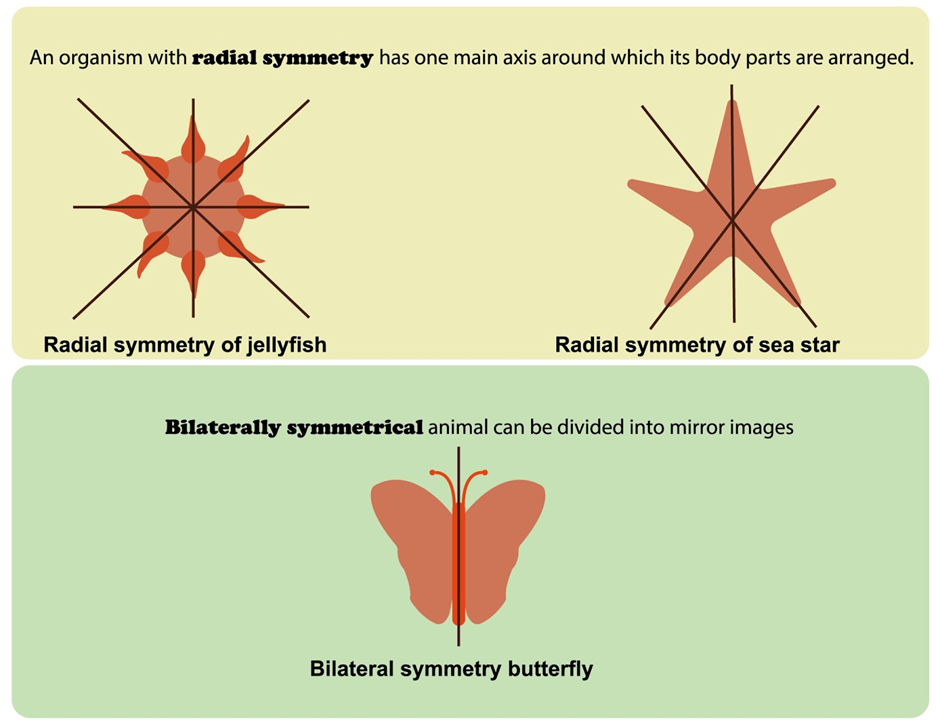What is symmetry?
A characteristic of organisms that exhibit uniformity in their parts on a plane or around an axis is known as symmetry in biology. A symmetrical creature would have an even distribution of duplicate parts on either side of the axis (indicating symmetry). The parts are typically a close repetition rather than an exact replication. The patterns in nature are also explained by this. Asymmetry is the absence of symmetry.
Bilateral, radial, and biradial symmetry are three types of symmetry found in living things. A type of symmetry in which the opposing sides are similar is known as bilateral symmetry. In a sagittal plane, the outside look is identical on the left and right sides; it is called radial symmetry.
Also Read: What is transpiration?

Types of Symmetry
Below are the types of Symmetry
Bilateral Symmetry
This is the most common form of symmetry in animals, where the body can be divided into two identical halves along a single plane, called the sagittal plane. This type of symmetry is prevalent in vertebrates, including humans, and many invertebrates such as insects and mollusks. Bilateral symmetry aids in streamlined movement and the development of a central nervous system, which is crucial for complex behaviors and sensory processing.
Radial Symmetry
In radial symmetry, body parts are arranged around a central axis. This type of symmetry is found in many aquatic animals such as jellyfish, sea anemones, and starfish. Organisms with radial symmetry typically have a top and bottom but no distinct left or right sides. This arrangement is beneficial for sessile or slow-moving organisms, allowing them to interact with the environment from all directions.
Also Read: What is the central dogma of molecular biology?
Spherical Symmetry
This type of symmetry occurs when any plane passing through the center of the organism divides it into identical halves. Spherical symmetry is rare and mostly seen in simple organisms like some protozoa and algae. It allows these organisms to experience their environment equally from all directions (Biology Discussion).
Biradial Symmetry
This form is a combination of radial and bilateral symmetry. Organisms with biradial symmetry, such as ctenophores (comb jellies), have a main axis with two mirrored halves and additional secondary axes that provide further symmetry.
Read More: Full Form of ATP in Biology
Importance of Symmetry
Symmetry in biology is not just an aesthetic attribute but has significant functional implications. It is associated with the organism's mode of life and environment. For instance, bilateral symmetry is advantageous for active movement and predation, while radial symmetry is suitable for stationary or slow-moving lifestyles. Symmetry also plays a critical role in evolutionary biology, influencing how organisms develop, interact, and adapt to their surroundings.
Understanding symmetry helps biologists comprehend the evolutionary processes that shape the diversity of life and the structural adaptations that enable organisms to survive and thrive in various environments.